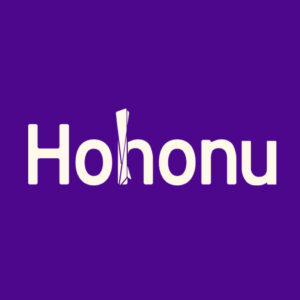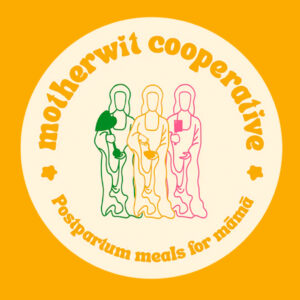The challenge of climate change has always been in the back of our minds at the Purple Prize, but this year it feels more urgent. Maybe it’s because our Director, Alec, brings a social and environmental impact sensibility into our work; maybe it’s because we’re collaborating with UH System Sustainability and Hawaiʻi Green Growth; and maybe it’s because climate change is going to be really bad and Silicon Valley’s response is to build bunkers or move to Mars.
In my opinion the future of innovation to combat climate change in Hawaiʻi, and also in the whole world, is going to be biocultural restoration. I’m borrowing this term from the special issue of Sustainability edited by Kevin Chang, Kawika Winter, and Noa Kekuewa Lincoln. It’s a great term to describe what is going on all around Hawaiʻi. “Biocultural restoration” captures how some people have known and some people are realizing that nature and culture go hand in hand. There isn’t “untouched nature” there are eco-technological achievements of indigenous stewardship. This is both what existed before industrialization and colonialism and what continues to exist in the parts of the world that are environmentally the most healthy and functional in terms of the ecosystem services that we all depend on, including sinking carbon. What we see in Hawaiʻi is the resurgence of Kanaka Maoli (Hawaiian) culture, which, because it’s a land-based, indigenous culture, means the resurgence of kīpuka of traditional forms of stewardship and ecosystem management, aka biocultural restoration. And increasingly we also see the linking together of these kīpuka through (k)new social innovations in how we relate to each other, collaborate, form networks, and get organized and savvy to interface with governments and funders.

With the Purple Prize we are adding in just a small facet to that work: encouraging our local talent to think about how digital technologies can be leveraged for biocultural restoration. For example how might we deploy sensors in our fishponds and streams to better understand what is going on within them, and how might we transmit and share that data? How might we build an app or a video game to tell moʻolelo of place that are encoded not just with cultural values and historical information but also with traditional ecological knowledge of place? How might we use technology to foster exchange within the ahupuaʻa? Responsible appropriation of digital technologies for indigenous ends is really just the icing on the cake of biocultural restoration.
Frankly at times I find myself more interested in the social technologies that are being constantly iterated and practiced in the very human work of figuring out how to understand each other and work together in relationships characterized by mutualism, and in the context of diversity and unresolved occupation. This is also work in education and building human capacity. In my cynical moments, I think that climate change is going to destroy us not because we don’t have the technology and knowledge to implement solutions, but because the task of actually working together is too daunting and overwhelming in this world of fractured relationships, low emotional intelligence, bureaucracy, compromised institutions, and unresolved historic trauma. We desperately need to take our strengths in social technologies and cultural translation seriously because the world needs them, and it needs them to spread through the transformative effects of experiences, not passively consumed TED talks and presentations. We need strong, grounded people holding space for more aloha circles, and we need less bland, commodified messages of aloha.
What I am trying to understand and learn more about this time around in the Purple Prize is the business and economics of technology. To be a maker of technology you’re going to need capital, and indeed this is supposed to be the appeal of a local tech industry — that it creates jobs and brings investment money into Hawaiʻi. But how do we navigate that without falling into the growth trap and the whole ecological problem of globalized economics focused on endless growth? How do we forge a new path of optimizing for multiple forms of capital rather than following the dominant corporate model of a manic focus on accumulating financial capital and increasing inequality? How do we resist outsourcing production and accepting unacceptable externalities? What is a sustainable, impact positive scale for a Hawaiʻi founded tech company? And if there is no such thing as this — if you can’t have a viable tech company that is truly locally sourced and that creates value for the long term instead of aiming for an exit — then how do we turn to other models that focus less on products and services and more on open source, sharing, interoperability, durability, recycling, and widespread technical knowledge so that communities choose DIY options to meet their technology needs instead of turning their money over to corporations?
In working toward answers for these questions I hope to think alongside people who are attempting to work out the whole problem of economics and capitalism. Hawaiʻi has transitioned in the last 300 years from sustainable local production to dependence on the global economy for the vast majority of our food and other materials. We’ve moved from no private property to commodification of culture and ever-climbing real estate prices. We are asked to welcome in the harms done by tourism and military for the sake of supporting the economy. I think those of us wanting to challenge the capitalist economy and consumer culture will have to sort through how and where we put our energy — either reforms and experiments with economic arrangements and financial tools that seek to redistribute wealth and facilitate collective/worker/community ownership, decision-making and local investment, or (re)building a system non-monetary, relationship-based abundance and exchange. Or both/and?
We call the Purple Prize an innovation competition, but in a way this falls into the lazy equation of innovation = technology = digital devices. Innovation is much bigger than this, and one area I think we need to really amp up innovation is in the ways that we design our communities and the ways we live our lives. I’m thinking of things like car culture that creates sprawl, traffic, and keeps us tied to fossil fuels; channelized streams that create runoff instead of refilling the aquifer; our problems with housing and homelessness; plastics pollution, waste, and wastewater; development patterns and public spaces that emphasize consumerism and fail to foster local production, community, and civic engagement. These things are challenging to address because of the need for spatial upheavals, legislative support, mass changes in lifestyle, challenges to ownership and private property, and the inevitability of infrastructure projects (which everyone seems to hate). We will have to think beyond the dichotomy of development or no development. To address climate change we need a combination of the biocultural restoration described above, and also risk-taking in implementing costly infrastructure pieces that increase sustainability; an array of smaller social and technical innovations that change the ways we live and travel; and community-based education and organizing that creates political will. It’s really a lot. But my hope for the future is that we will collectively take on these challenges, with the best of place-based knowledge and social technologies put at the center of the process, and that Purple Prize will be a part of that.



